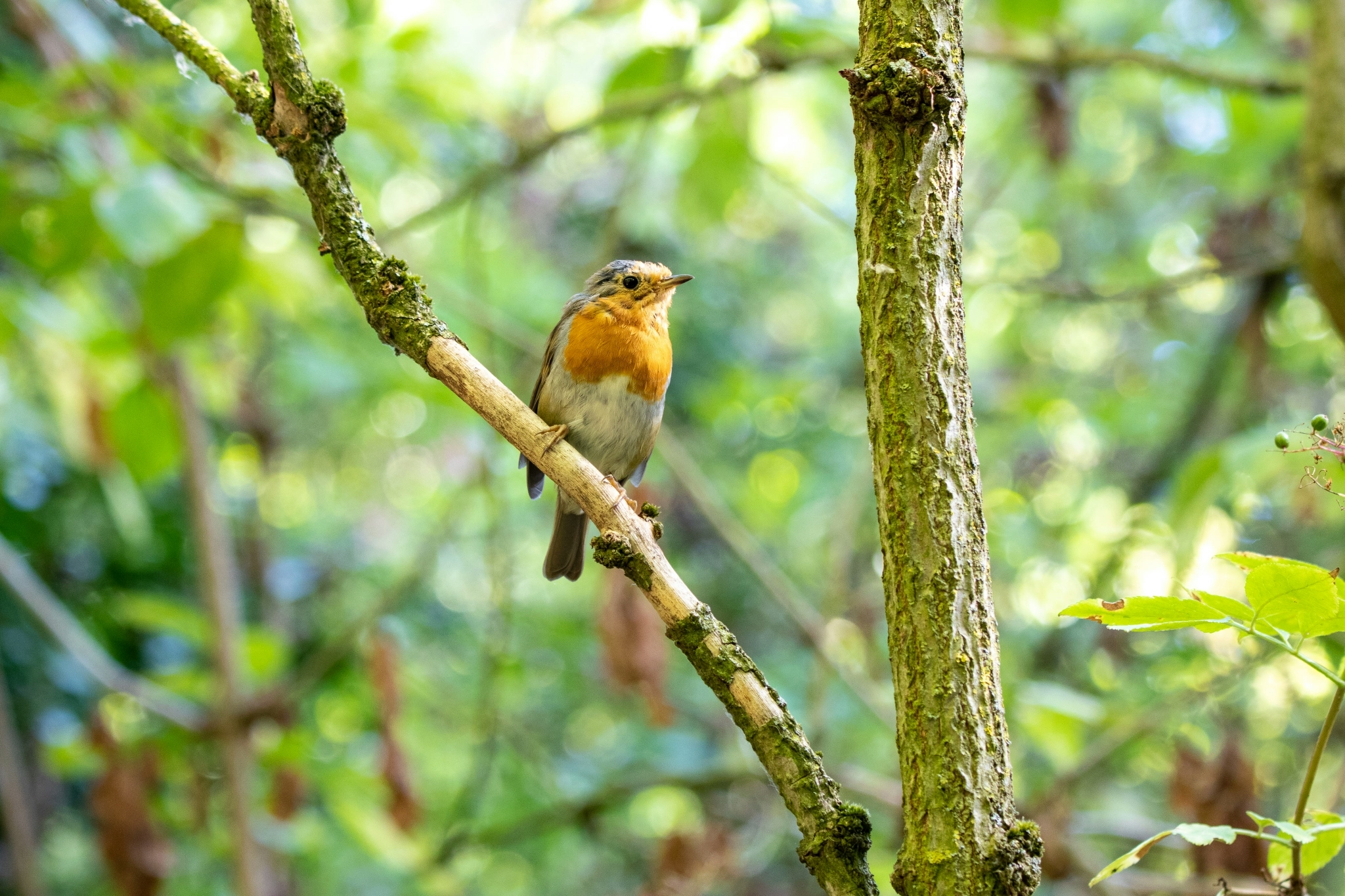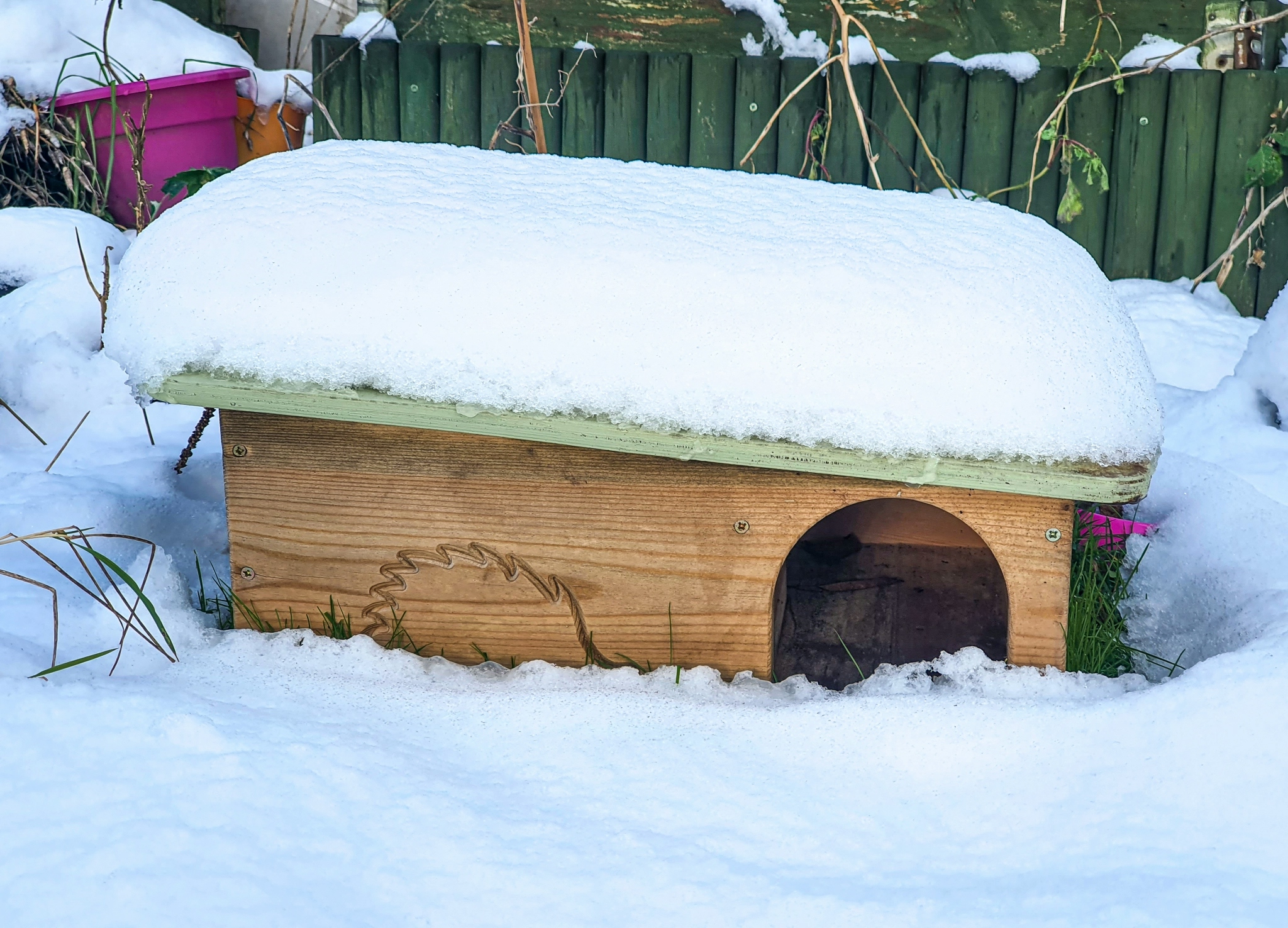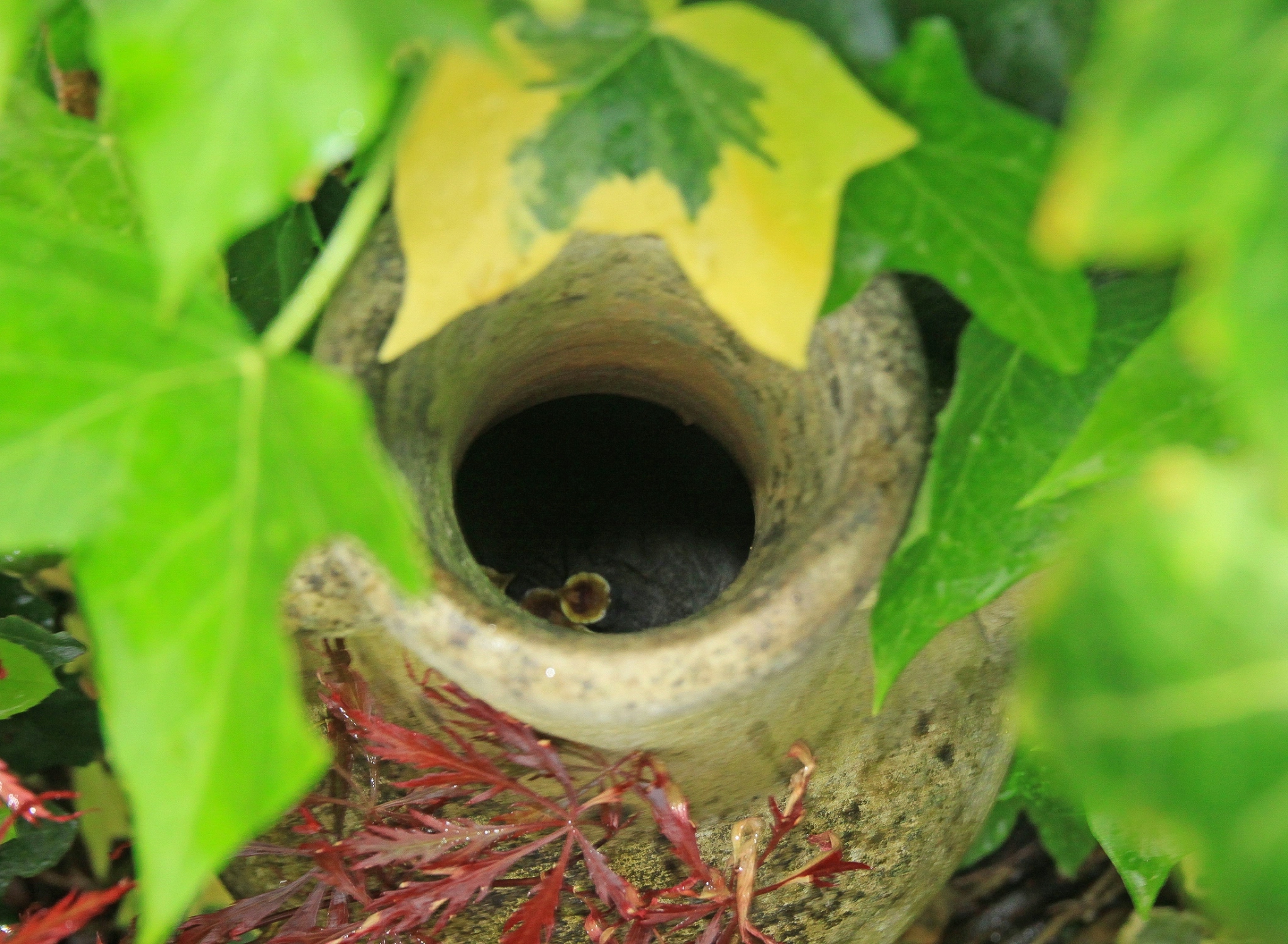IT'S NATIONAL NEST BOX WEEK!

National Nest Box Week runs from 14th February each year, and its aim is to get as many people creating and hanging nest boxes for our birds as possible. The weather is finally starting to get warmer, spring is on the way, and this is the perfect time to get those nest boxes out for use this year!
Do birds need nest boxes?
Nest boxes provide birds with a safe, dry, warm place to roost and to raise their young. They’re increasingly important as natural habitat for birds is declining. The way we build houses these days doesn’t allow eaves suitable for nesting in, or other nooks and crannies for nest-building, and new build estates contain even fewer trees and hedgerows now than the estates of the past few decades (which was a pretty low bar). The way that we farm has also changed, with fewer hedgerow, tree and ground nesting sites on our agricultural land.
Worse, a worrying obsession is spreading among Brits. It’s pervasive, destructive, and dressed up as something positive; it’s what Benedict MacDonald calls Ecological Tidiness Disorder. We are losing our connection with the natural world and starting to see it as something to be tamed and tidied into oblivion. New gardens are built as (and tend to remain as) fence-to-fence turf. More and more people are opting to cover their garden in concrete slabs or plastic grass. We’re over-pruning, over-tidying and spraying everything with poisonous pesticides. This means there are less places for birds to roost and nest – fewer tangles of ivy for robins to nest in, fewer thick hedgerows for house sparrows to nest in, and fewer tree cavities for tawny owls to nest in.
Our wildlife is in dramatic decline. The 2019 State of Nature Report told us that 41% of our wildlife species have suffered a moderate or serious decline since 1970, and 43% of our bird species are threatened. The same report identifies urbanisation as one of the drivers of the devastating changes to our wildlife populations, so anything we can do to make our urban and suburban areas more wildlife-friendly is definitely worthwhile!
Who can I attract?
Let’s get to the exciting bit: which birds use nest boxes and who might you see if you put some in your garden?Almost all birds will use nest boxes, but they have different preferences.
The most common nest box is a square box with a small round entrance hole (usually 28 or 32 mm). If you put one of these in your garden you might get great tits, blue tits, sparrows, marsh tits, coal tits, or if you’re lucky even nuthatches, tree sparrows, redstarts or pied flycatchers.
Another common nest box design is the open-fronted design. This is a box with a large square hole covering about half of the front of the box. If you put one of these boxes up you might be treated to a fantastic view of a robin raising her young, or a blackbird if the box is big enough. They’re also favoured by the tiny wren, the spotted flycatcher, and pied wagtail.
If you splash out, or are good at DIY, you can also put up nest boxes for bigger birds like jackdaws, starlings and wood pigeons, specialist boxes for different species of owl, a terrace of nest boxes for the communal-nesting house sparrow, cupped nests for swallows, or high nest boxes with a very narrow entry hole for swifts.
Don’t forget about mammals! You can build or buy a hedgehog house that will provide hedgies with somewhere safe to eat and drink if you feed them, or somewhere warm and dry to sleep, nest and hibernate if you leave it empty. If you’ve seen bats around your garden or would like to attract them, you can put specialist bat nesting boxes high up in a sunny place to give them somewhere to roost. I get bats in my garden even though I live right in concrete suburbia, so don’t dismiss them just because you haven’t seen them yet – provide the habitat, then keep your eyes peeled at dusk. If you’re feeling adventurous or live in a more rural area, you can also buy dormice nesting boxes.

Can anyone put a nest box up?
Most people who have access to an outdoor space can put a nest box up. If you don’t have access to outdoor space, you might be able to get involved in volunteering to hang nest boxes at your local park, nature reserve or other green space, or get involved in helping your neighbours to put up nest boxes.
There are many affordable nest boxes available and they can go in a variety of spaces: on fences, in trees, on the side of a building, in a bush or hedgerow – the possibilities are endless, so have a think about where you could create a place for birds or mammals! There are also loads of great guides for building your own nest box (see resources below), which is a great way to get kids involved.
Can I put one anywhere?
Generally speaking, wildlife isn’t too fussy. Having said that, you don’t want to put your nest box somewhere that invites birds to dangerous nesting areas, so here are some pointers:
Lots of birds love nest boxes on fences, but don’t put your nest box close to the top of a fence if you know you get lots of cats visiting your garden, as they’re likely to predate the nest.
Don’t hang nest boxes facing towards the South unless they’re sheltered, as they’ll get too hot.
Put the box at the right height – it doesn’t need to be 8 ft high, but try not to put it lower than 1 m.
If you’re putting the box in a very exposed location, try to angle the entrance hole north or east to ensure it doesn’t face into the wind and rain, or tilt it forward slightly so the rain bounces off the roof.
Put nest boxes in a different area to your feeders. You wouldn’t want your kids to try and sleep in the canteen at work, and birds don’t want to try and raise young around a busy food source.
Make sure birds have a clear flightpath to the entrance hole.
Ensure the box is firmly attached – imagine the horror of it falling down with baby birds inside!
If predators like squirrels are around, add a metal plate around the entrance hole to stop them getting access.
Where can I buy them?
If you’re handy with a saw, you can make one! See the resources for more information on how to build a safe bird nest box.
If you’re less into DIY, I hear you, and you can buy nest boxes at pretty much any garden centre as well as online. When buying online, either buy from a reputable source such as the RSPB, or look for the key characteristics of a good bird nest box:
Made from wood or woodcrete (not metal or plastic)
Has an overhanging roof (to provide protection from the rain and predators)
Does not have a perch (nesting birds don’t need perches, and they can be used by predators)
Has a removable roof, side or base (for easier cleaning between seasons)
Happily, most nest boxes I can find online do meet these criteria, but you’ll still see a few poorly-designed ones around.
Will wildlife actually use my nest boxes?
Yes! You might even see birds taking an interest in nest boxes within the first few days after they’re put up.
The best way to increase the chances that your nest box is used is to create a habitat in your outdoor space that is wildlife-friendly. When it comes to nesting birds, this primarily means a garden that has a lot of insects, as this is what birds feed to their chicks. Providing food like seeds and sunflower hearts in feeders is helpful for the adults, and for the young after they’ve fledged, but adults will not feed this to their young, so they’ll need to find insects and invertebrates nearby. You can increase the number of insects in your garden by avoiding the use of pesticides, planting wildlife-friendly plants, and creating a wildlife pond.
If you don’t spend a lot of time in your garden, you might think that nothing is visiting your nest boxes, especially nest boxes for mammals that are nocturnal. If you have access to one, you could set up a trail camera or nest box camera that is motion-censored so you can see who’s checking out the new homes, but if you don’t have a camera try to spend some time sitting quietly in your space – you’ll be surprised at what you see!
If you do set up a camera or find out what’s going on with the nest boxes in your garden, consider engaging with the British Trust for Ornithology (BTO)’s Nest Record Scheme, where you can provide important data on nesting birds to the BTO for use in their research.
Birds often nest in surprising places. I’ve seen photographs of them nesting in a traffic light, in a gatepost, in a cigarette bin, in a post box and even in a drain. In my parents’ garden, great tits chose to nest in a faux Greek urn, the bottom of which was only about 20 cm from the floor. I’m divided as to whether to take hope from this that wildlife is adapting to the changes we are making to the natural world, or whether this innovation in nesting locations is a heartbreaking representation of how far we have pushed our wildlife out of their natural habitat, and their desperation for anywhere to raise young in the nature-depleted world we’re creating.
Whichever way you see it, hanging nest boxes is one positive thing we can do to give our wildlife a better fighting chance. Let me know what nest boxes you put up and who you see visiting them!

RESOURCES
The website for National Nestbox Week: https://www.nestboxweek.com
How to build your own nest box: https://www.rspb.org.uk/fun-and-learning/for-families/family-wild-challenge/activities/build-a-birdbox/
On cleaning and maintaining nest boxes: https://www.rspb.org.uk/birds-and-wildlife/advice/how-you-can-help-birds/nestboxes/nestboxes-for-small-birds/cleaning-nestboxes/
Tips for putting up a nest box, including a great BTO PDF guide: https://www.bto.org/how-you-can-help/providing-birds/putting-nest-boxes-birds/putting-nest-box
The BTO’s Nest Record Scheme: https://www.bto.org/our-science/projects/nrs
The State of Nature Report: https://nbn.org.uk/stateofnature2019/ (Hayhow DB, Eaton MA, Stanbury AJ, Burns F, Kirby WB, Bailey N, Beckmann B, Bedford J, Boersch-Supan PH, Coomber F, Dennis EB, Dolman SJ, Dunn E, Hall J, Harrower C, Hatfield JH, Hawley J, Haysom K, Hughes J, Johns DG, Mathews F, McQuatters-Gollop A, Noble DG, Outhwaite CL, Pearce-Higgins JW, Pescott OL, Powney GD and Symes N (2019) The State of Nature 2019. The State of Nature partnership.)
Photo of great tits nesting in faux greek urn by Simon Kinsey.
Share with your friends
Subscribe to learn more
Join me in exploring our natural world and cultural heritage as we learn how to protect and restore it. Get notified on my latest posts and a monthly newsletter on wider conversation topics for us to chat about.
Recent Posts
If you enjoyed this one, then you might like these too.